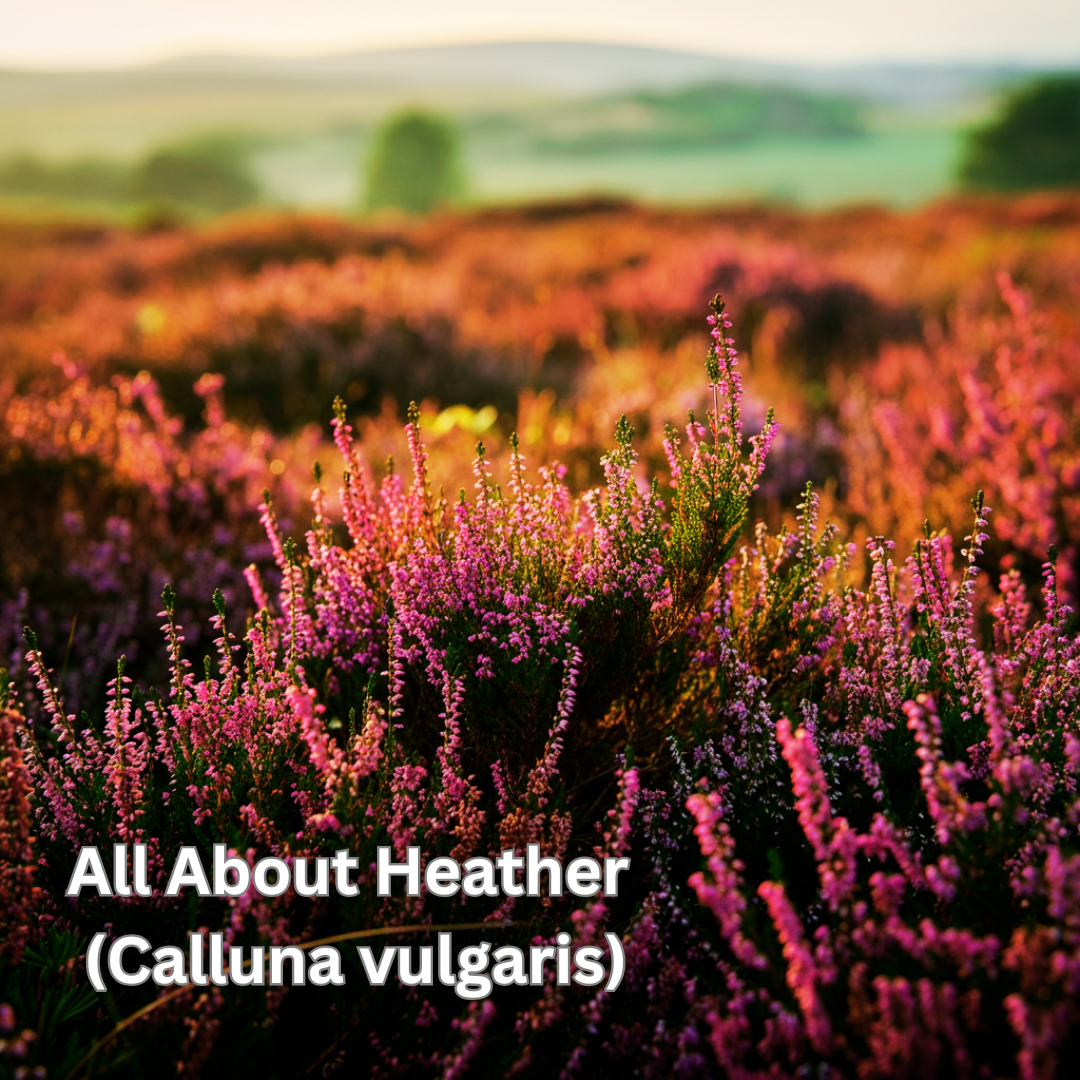Heather, or Calluna vulgaris, is a resilient and attractive evergreen shrub prized for its dense ground cover and vibrant, long-lasting flowers. A familiar sight across the moorlands and heaths of Europe, it offers gardeners a low-maintenance option that provides year-round texture and a burst of late-season colour.
A Description of the Plant
Calluna vulgaris is the sole species in the genus Calluna, part of the Ericaceae family. It is a low-growing, perennial evergreen shrub that typically reaches a height of 20 to 50 centimetres, although it can occasionally grow up to one metre tall in favourable conditions.
The plant has small, scale-like leaves that are arranged in opposite pairs along its wiry stems. These leaves are usually a deep green but can take on bronze or purple tints during the colder winter months, adding to its ornamental value.
The most recognisable feature of heather is its profusion of small, bell-shaped flowers. These flowers are arranged in spike-like clusters known as racemes and bloom from late summer into autumn. While typically mauve or purple, cultivated varieties offer a broad spectrum of colours, including white, pink and deep red. After flowering, the plant produces small, dry seed capsules.
Seasonal Interest
One of the greatest attributes of Calluna vulgaris is its ability to provide visual interest throughout the entire year.
- Spring: In spring, new foliage emerges, often with fresh, bright green tones. The plant begins to show vigorous growth in preparation for the upcoming flowering season.
- Summer: From late July through to September, heather puts on its main display. The plant becomes covered in dense spikes of flowers, creating a carpet of colour that is particularly striking when planted in large drifts. These blooms are a valuable source of nectar for bees and other pollinators.
- Autumn: The flowering period extends well into autumn, providing colour when many other garden plants have finished for the year. As temperatures drop, the foliage of many cultivars begins to change, developing rich bronze, orange or reddish hues that persist through the winter.
- Winter: Even after the flowers have faded, they often remain on the plant, turning a russet brown and offering textural interest against a backdrop of snow or frost. The evergreen foliage ensures the plant continues to provide structure and colour in the garden during the bleakest months.
The Benefits of Calluna vulgaris
Heather offers several distinct advantages for gardeners:
- Low Maintenance: Once established, it is an extremely resilient plant that requires minimal care. It is drought-tolerant and can thrive in poor, acidic soils where other plants might struggle.
- Weed Suppression: Its dense, spreading growth habit makes it an excellent ground cover, effectively suppressing the growth of weeds and reducing the need for manual weeding.
- Pollinator Friendly: The late-season flowers are a vital food source for bees, butterflies, and other insects, supporting local biodiversity at a critical time of year. Heather honey, produced by bees that forage on its flowers, is highly prized for its strong, distinctive flavour.
- Versatility: Calluna vulgaris is suitable for a wide range of garden applications, including rock gardens, borders, containers and mass plantings on slopes or banks to control erosion.
Disadvantages to Consider
Despite its many benefits, there are a few potential drawbacks to growing heather:
- Soil Requirements: It is an ericaceous plant, meaning it requires acidic soil with a pH between 4.5 and 5.5. It will not perform well in alkaline or chalky soils unless the soil is amended or the plants are grown in containers with appropriate ericaceous compost.
- Pruning is Necessary: To maintain a compact shape and encourage profuse flowering, heather should be pruned annually in early spring. Neglecting this task can result in the plants becoming woody, leggy and less attractive over time.
- Susceptibility to Root Rot: While drought-tolerant, Calluna vulgaris demands well-drained soil. It is susceptible to root rot if it sits in waterlogged conditions, particularly during the winter months.
History and Folklore
Heather has a long and significant history, particularly within Scotland, where it covers vast areas of the Highlands. Its wiry, durable stems were historically used for a variety of practical purposes, including making brooms (besoms), thatching roofs, weaving baskets and even bedding.
In folklore, heather is often associated with luck and protection. White heather (Calluna vulgaris ‘Alba’) is considered especially lucky. According to legend, it grows on the resting places of fairies or where no blood has been shed in battle. It was a tradition for Scottish clansmen to wear a sprig of white heather in their bonnets for protection before a battle. Queen Victoria helped popularise this belief, contributing to its status as a symbol of good fortune.
Heather was also used to brew a traditional type of ale, known as heather ale. The recipe for this beverage was a closely guarded secret, and folklore tells of the last Pictish king choosing death over revealing the recipe to invading Vikings.
A Worthy Addition to Your Garden
With its hardy nature, year-round interest, and benefits to wildlife, Calluna vulgaris is a valuable and versatile plant. Its ability to thrive in challenging conditions and provide a carpet of vibrant, late-season colour makes it an excellent choice for gardeners seeking a low-maintenance yet high-impact shrub.
Whether used as ground cover, in a rockery, or as part of a dedicated heather garden, this evergreen plant provides texture and structure that endures through all four seasons. By understanding its specific needs for acidic, well-drained soil and committing to annual pruning, you can ensure that this historic and beautiful plant flourishes, bringing a touch of the wild moorlands into your own garden.
Snowdrops the symbol of Hope and Resilience, The Enchanting World of the Winter Aconite
